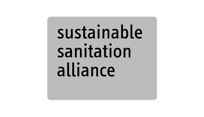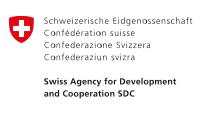Not recommended!

Contained burning eliminates solid waste through the combustion of specific solid waste fractions under controlled conditions in a simple furnace. Contained burning is not recommended because of its high emission levels endangering health and the environment.

Contained burning is often assumed to be the same as incineration. It is not. It burns specific waste fractions in special infrastructure/equipment designed for the purpose, in the absence of other solutions. However, given its simple design and low level of control, it is often a hazardous practice which, depending on what kind of waste is burned, releases contaminants endangering human health and the environment. By contrast, incineration is a highly sophisticated, technical and complex waste-treatment approach that fully controls fly ash, gas and slag emissions using specific technical and monitoring measures to limit environmental and health impacts. However, incineration is expensive and highly skilled; it is not recommended for humanitarian response. If the waste is combustible, contained burning reduces waste volumes. If controlled conditions are maintained, and the design and operation enhance the combustion conditions to achieve complete combustion, harmful emissions can be partly reduced. Control conditions include achieving and maintaining temperatures during burning as well as the residence time of the waste in the furnace. Given the diverse nature of mixed domestic waste, contained burning is not recommended as complete combustion is difficult to achieve, resulting in the emission of toxic and harmful fumes. In addition to obviously non-combustible waste (such as stones and metals) some fractions are unsuitable for contained burning: organics are often wet and difficult to burn and burning plastics release toxic pollutants.
Design Considerations
A simple furnace is constructed of one or two burning chambers with an exhaust chimney. Installing a furnace with an engineered design is essential to ensure optimal combustion conditions, including the residence time and temperatures that foster complete combustion. Temperatures of between 850°C and 1000°C should be maintained in the primary and secondary combustion chambers throughout the burning period, with at least a one-second smoke-residence time. The stack height of a furnace must exceed four meters to prevent emissions from directly affecting operators or others nearby. The furnace should be built at least 150 m away from households and 300 m from horticulture or leaf crops, further if nearby buildings are tall. It should be constructed of concrete, blocks or bricks; the floor should be solid concrete. Two types of furnaces are commonly used: auto-combustion furnaces for when the waste has enough heating value to support its own combustion; and fuel-assisted furnaces where fuel is added. The composition of the waste and its respective heating value is therefore a key consideration when selecting the furnace type. The furnace dimensions depend on the required capacity (volume and type of waste) and the burning capacity of the furnace model (dimensions, type, heat reached, quality of materials).
Materials
Because of the high temperatures, refractory bricks and mortar and stainless steel of sufficient thickness to reduce premature corrosion are recommended. These are generally available in most contexts. Alternatively, technical substitutes can be found (e.g. common mortar and cooked bricks) though they may affect the equipment's durability. Prefabricated or portable high-quality simple furnaces are available; they are more expensive and generally of low capacity.
Applicability
Contained burning can be applicable in the early phases of an emergency as a short-term temporary measure to manage specific fractions of waste such as menstrual waste W.3 or medical waste W.1 and reduce immediate public health risks. It should not be used long term due to its significant health and environmental impact. Complete combustion requires sufficient dry combustible refuse; when unavailable, effective combustion often relies on additional, expensive fuels making contained burning even less appropriate for communities. As soon as possible, waste disposal should transition to more sustainable practices. Contained burning with specialised furnaces can be suitable to thermally treat high-risk waste such as infectious and hazardous healthcare waste W.1.
Operation and Maintenance
Contained burning requires highly trained operators. The operating environment must limit the exposure of workers and communities to toxic fumes from combustion and minimise potential environmental harm. An operation and maintenance plan must be developed. There is a period at the beginning and end of the process when the furnace is not operating in its optimal temperature range, so it is better to run the furnace continuously. This requires specially designed working schedules. Maintenance includes verifying the physical integrity of the equipment and materials to detect cracks on internal and external bricks and corrosion in the chimney, hinges and other metallic parts. Cleaning the furnace interior, chimney, equipment, tools and surrounding area is also required. Ashes should be regularly extracted from the furnaces and disposed of safely.
Health and Safety
Operators may be exposed to hazardous materials, medical waste, heat and ashes (which can contain toxic substances and heavy metals) and must be properly trained and equipped to handle them safely. Operators must also be trained about risks from toxic fumes, including furans and dioxins, high levels of particulates, acid gases, heavy metal vapours, carbon monoxide, nitrogen dioxide and sulphur dioxide, especially at temperatures below 600°C if PVC or other materials such as plastics and chemicals are burnt. These fumes can be directly inhaled or deposited on the soil, water and crops, becoming part of the food chain and exposing operators and households to health risks while also harming the environment. Personal protective equipment should be provided X.4. Fire extinguishers and first aid kits must always be available around the furnaces. Fences around the equipment are recommended, to prevent intrusion and potential accidents.
Costs
The cost of furnaces is low if locally available materials are utilised. Prefabricated, modular or portable high-end equipment is significantly more expensive. It is important to budget for operation and maintenance costs (including equipment, training, and salaries), running costs (such as fuel oil, dry wood or charcoal) and the cost of segregation, collection and transportation of solid waste and the disposal of ashes, if required.
Social Considerations
Contained burning should be carefully considered due to its potentially high impact on local communities and because burning waste removes any incentive to sort and recycle it. It should only be implemented with community consultation including the most vulnerable and marginalised persons X.2. Awareness campaigns about air pollution, health effects and cultural sensitivities are needed to address local people’s concernsX.6.
Key Decision Criteria
Input Products
Response Phase
Application Level
Management Level
Space Required
low
Technical Complexity
medium
Objectives & Key Features
Contained burning of specific waste fractions in the absence of other solutions
Strength & Weakness
- A substantial reduction in the weight and volume of solid waste
- High temperatures deactivate pathogenic or infectious substances
- Low-technology solutions exist using local materials
- Generates emissions which endanger human health and the environment
- Does not contribute to recycling efforts
- Risk of malfunction if operators are not instructed correctly
Selected References
General information on contained burning
Picken, D.J. (2004): De Montfort" Medical Waste Incinerators
Stauffer, B., Stuhler, D. (2020): Small Scale Incineration Factsheet, SSWM






